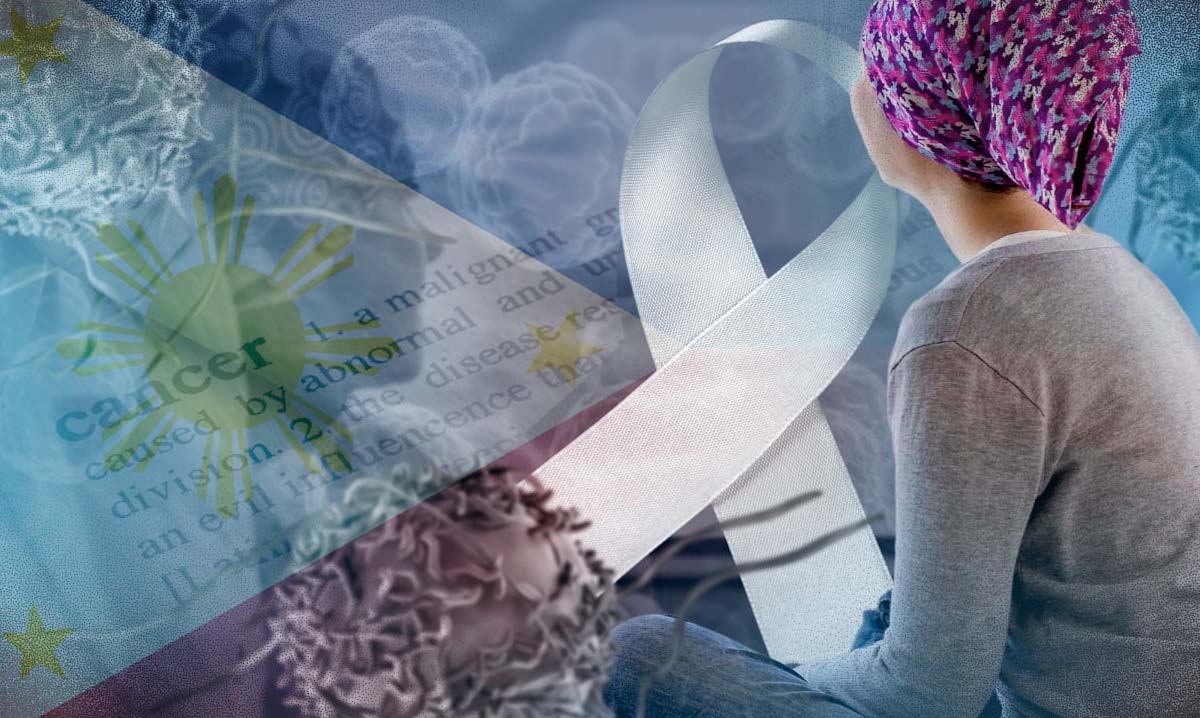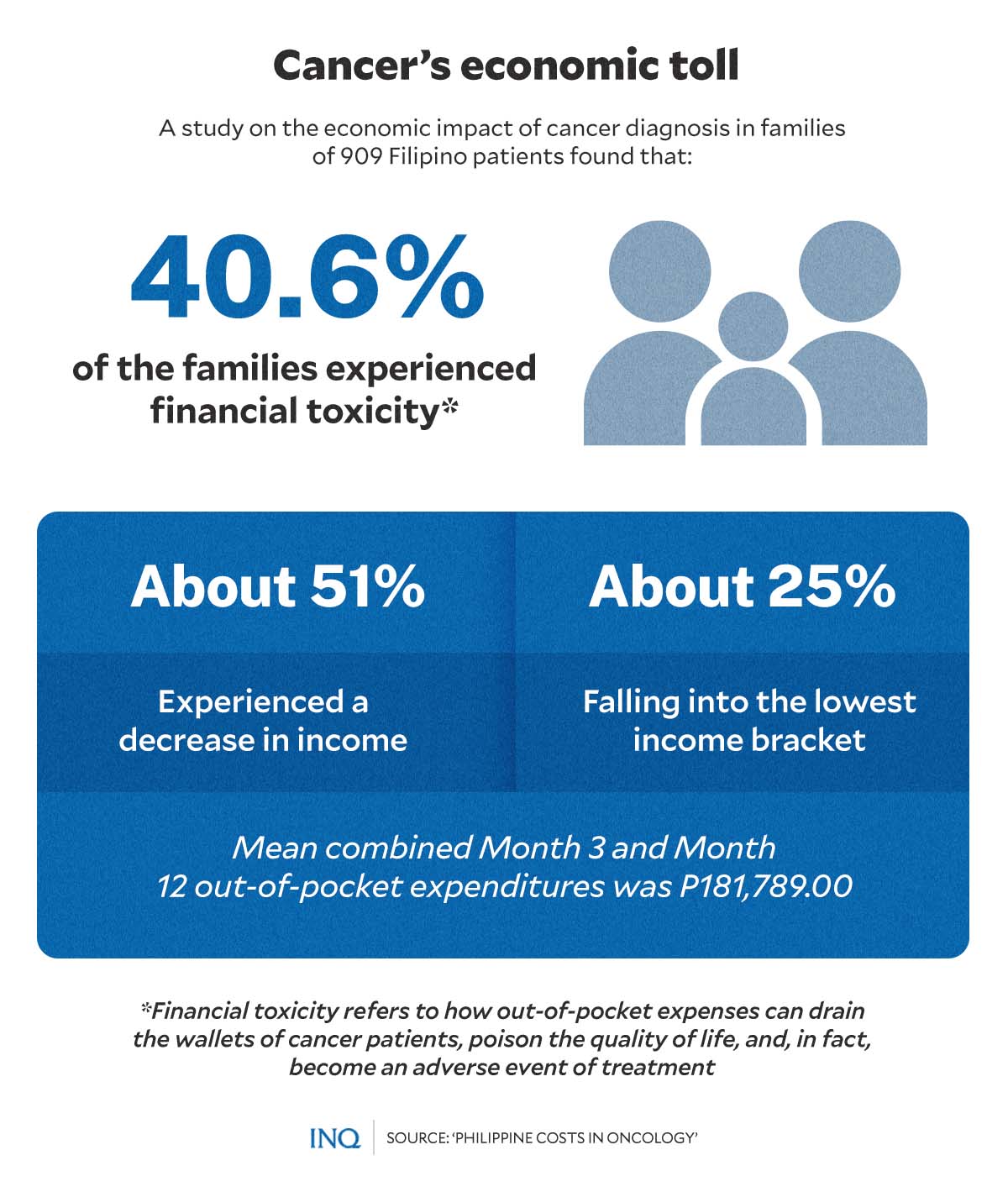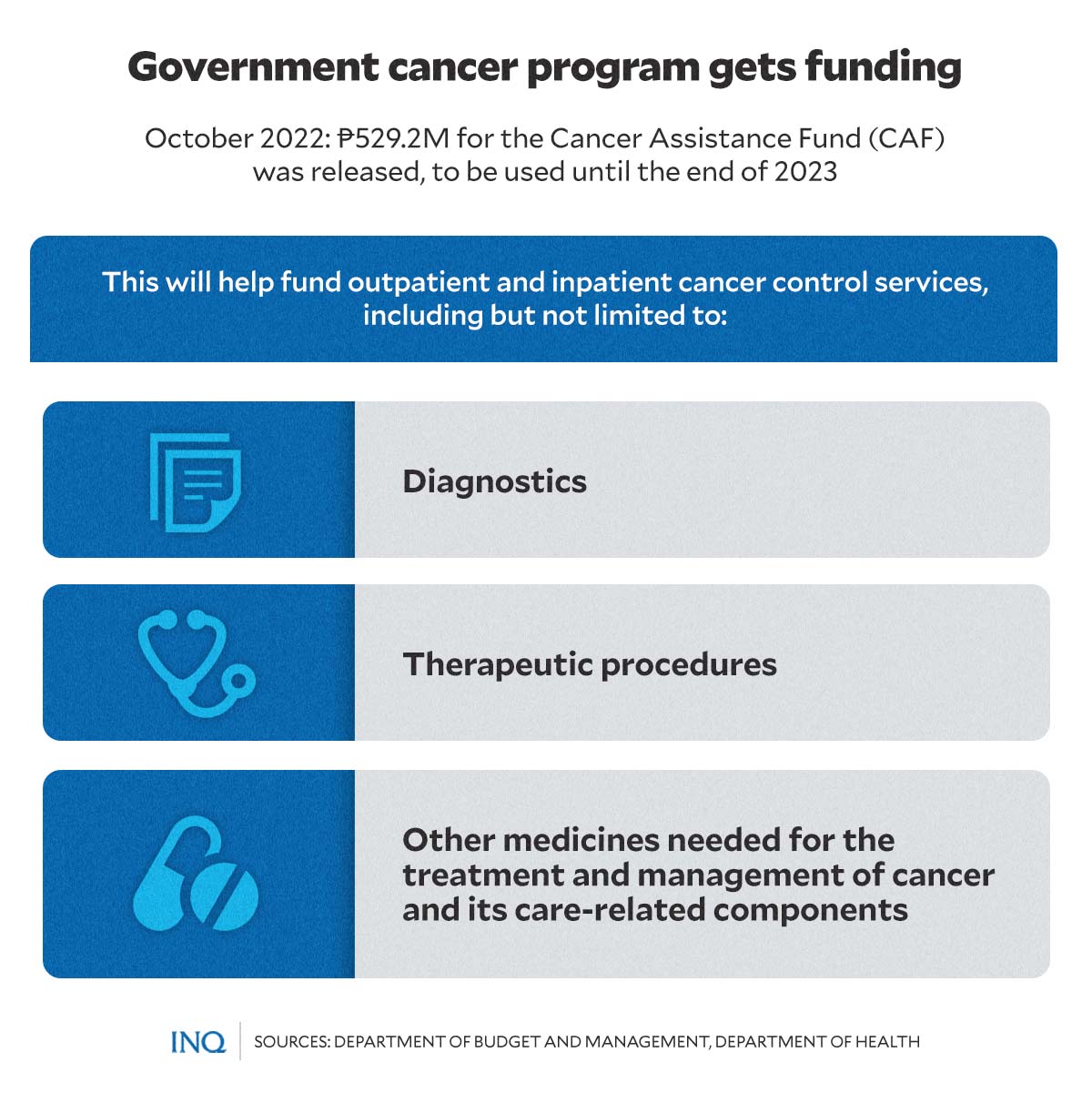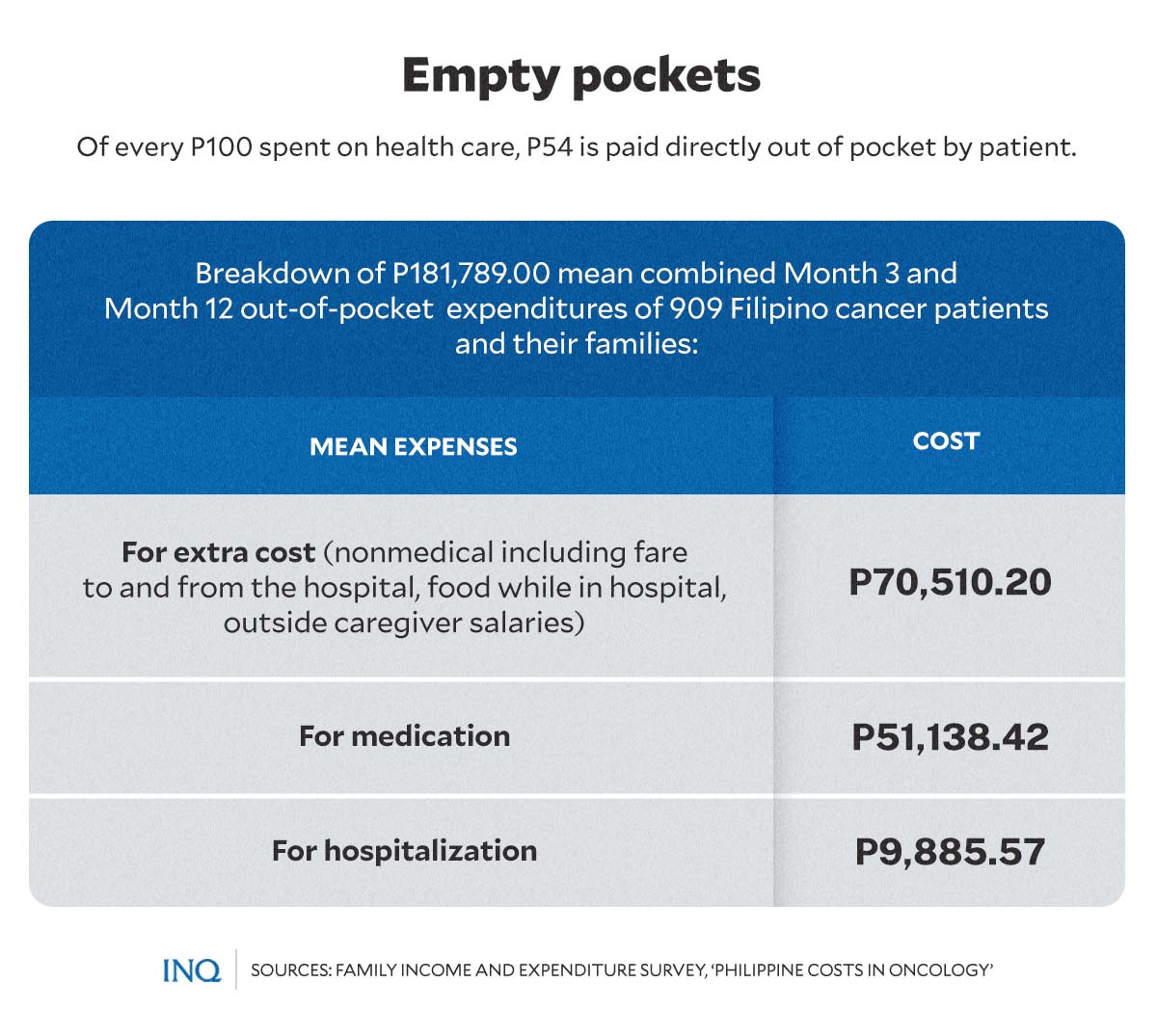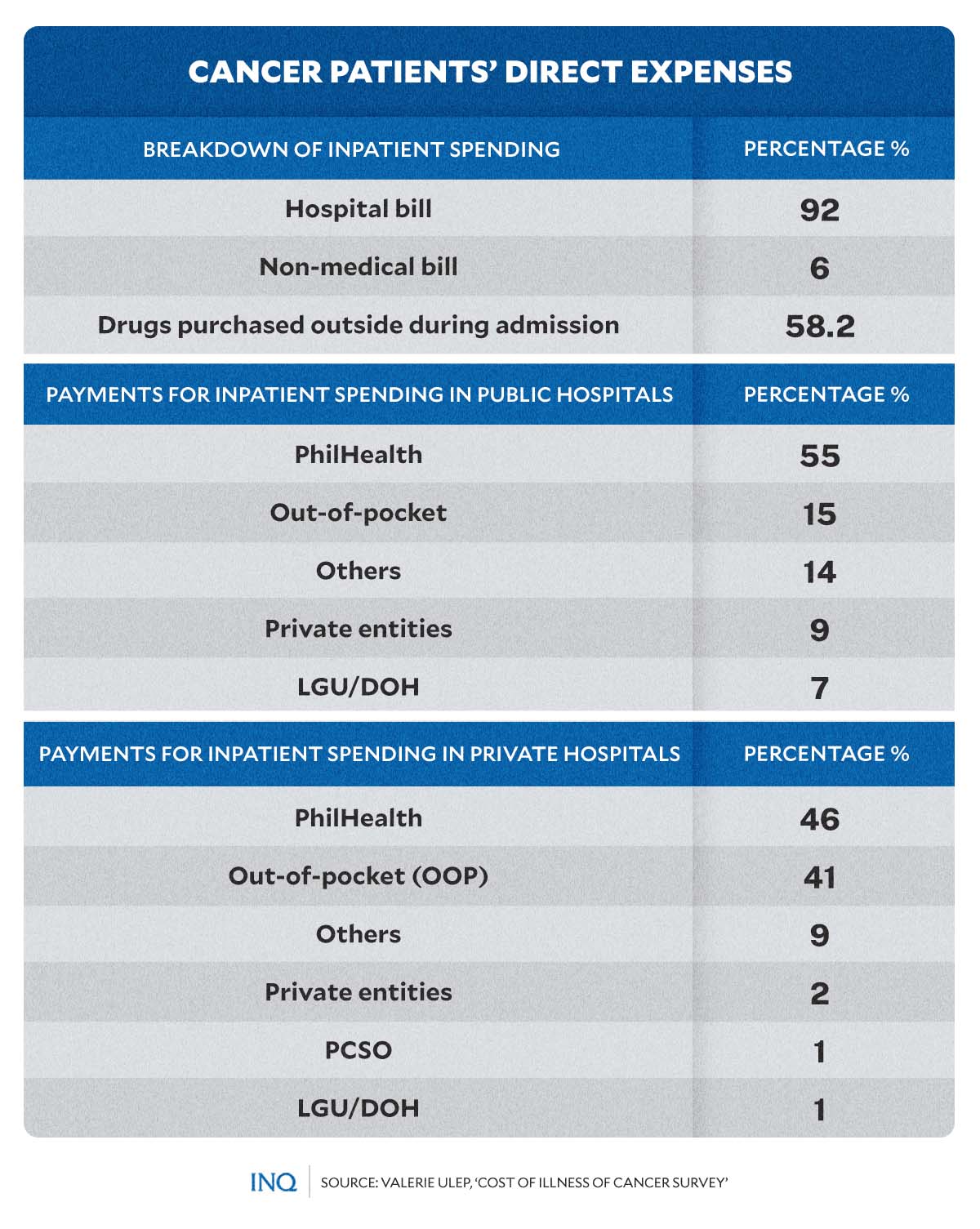Fighting cancer in PH: Hope raised for P10B additional funds
MANILA, Philippines—A bill proposing the creation of a ₱10 billion assistance fund for the treatment and care of indigent cancer patients in the country has been filed at the House of Representatives.
House Bill (HB) 7687, filed by Davao City Rep. Paolo Duterte with Benguet Rep. Eric Yap and ACT-CIS Rep. Edvic Yap, seeks to strengthen an existing cancer assistance fund mandated by the National Integrated Cancer Control Act (Republic Act 11215).
Under Section 20 of RA 11215, a Cancer Assistance Fund was established to support the cancer medicine and treatment assistance program. The Department of Health (DOH) was tasked with managing the fund—which may come from the health department’s approved budget, donations, and fundraising activities.
However, according to the authors of HB 7687, despite the existing cancer assistance fund, many patients from low-income households continue to bear the financial burden of medical care and treatment for cancer—one of the leading causes of morbidity and mortality among Filipinos.
The bill proposed a P10 billion Cancer Medicine and Treatment Fund, which will be administered by the Philippine Health Insurance Corporation (Philhealth) through its accredited government hospitals.
Article continues after this advertisement“The program shall be limited to indigent and underprivileged cancer patient beneficiaries to be identified by PhilHealth in close coordination with the Department of Social Welfare and Development (DSWD), the Department of Health (DOH), and the Department of the Interior and Local Government (DILG),” the bill stressed.
Article continues after this advertisementIt also noted that aside from the initial appropriation of P10 billion, any necessary amount to continue and carry out the fund’s objectives should be included in the DOH’s annual budget.
Cost of cancer hurting patients, families
Cancer treatment involves radiation therapy, immunotherapy, targeted therapy, and chemotherapy. The last, according to the US-based Mayo Clinic, is the most often used treatment method.
In the Philippines, the cost of cancer treatment can range from ₱120,000 to as much as over ₱1 million. The estimated price of chemotherapy cost per session, depending on the cancer type, meanwhile starts at ₱20,000 up to over ₱120,000.
While efforts have been made to make cancer treatment—including chemotherapy, targeted therapy, and chemotherapy drugs—available and accessible to more Filipino cancer patients, many still rely on their own money to pay for the medical services they needed.
A recent study by Valerie Ulep, a senior research fellow at the Philippine Institute for Development Studies (PIDS), found that among cancer patients who receive inpatient medical services in public hospitals, around 15 percent of the cost of medical care is still paid out-of-pocket.
READ: PH cancer patients lack access to preventive screening, costly treatment
Over half—55 percent—of the inpatient medical bill is covered by PhilHealth, while the remaining balance is paid by private entities (9 percent), local government units or the health department (7 percent), and other sources (14 percent).
On the other hand, out-of-pocket expenses for inpatient spending in private hospitals were much higher (41 percent). PhilHealth covers 46 percent of the costs of medical services among these patients.
Data also showed that out-of-pocket and other forms of private spending account for the majority of outpatient visits.
“The main source of outpatient spending are OOP (out-of-pocket), which are regressive and catastrophic,” said Ulep.
“While PhilHealth provides a significant financial protection during admissions episodes, households remain at risk of exposure to catastrophic spending because the SV of PhilHealth is only 50% excluding the purchases outside hospitals,” he added.
‘Financial toxicity’
A study published in 2018 in Acta Medica Philippina—a peer-reviewed general medical and health science journal published by the University of the Philippines (UP)—highlighted the economic impact of cancer diagnosis on patients’ families.
The study, which analyzed 909 cancer patients in the Philippines, found that 40.6 percent of cancer patients’ families experienced financial toxicity—or financial problems—due to the high cost of medical care.
READ: ‘Financial toxicity’ hurting PH cancer patients
The researchers also found that the mean combined out-of-pocket expenses of respondents at 3 and 12 months after diagnosis amounted to ₱181,789.00
Previously published statistics also showed that at least 7 in 10 cancer patients in the country “drop out of treatment regimen” due to lack of funds.
Bigger cancer funds sought
From being excluded in the 2023 General Appropriations Act (GAA) Congress last February restored the government funds for cancer to a total of ₱1.56 billion.
Of the ₱1.56 billion that will be lodged under the DOH, ₱1.054 billion will subsidize cancer prevention, detection, treatment, and care, in line with Republic Act No. 11215 or the National Integrated Cancer Control Act—which aims to prevent cancer and improve cancer survivorship, and make cancer treatment and care more equitable and affordable for all.
The remaining ₱500 million will go to the Cancer Assistance Fund (CAF), which will be used for cancer prevention, detection, treatment, diagnostics, and care for the eight priority cancer types identified by the DOH.
On top of the restored cancer funds, a joint memorandum circular outlining the guidelines for using the CAF released last year stated that ₱529.2 million worth of funds for cancer patients will remain valid until the end of 2023.
READ: More funding, assistance bring cancer patients closer to recovery
In a statement last February 9, the NKTI also announced that 23 public hospitals have started offering free targeted therapies for breast cancer patients who cannot afford the required 18 treatment cycles, which cost from ₱300,000 to ₱450,000.
The program is covered by the health department’s ₱1.56 billion worth of cancer funds.
However, according to Dr. Marvin Mendoza, head of the oncology section at the National Kidney and Transplant Institute (NKTI), only 200 patients would be accommodated nationwide for the free 19-month cancer treatment cycle due to the limited budget for the treatment program.
“We can beat cancer. We can save lives. We can do more if the budget is increased by Congress,” Mendoza said.
READ: Bigger cancer budget equals better treatment, fewer deaths in PH
Last year, Las Pinas City Rep. Camille Villar filed HB No. 5686 which seeks to institutionalize a ₱10 billion fund to support poor cancer patients and their families against the costly and debilitating disease.
TSB
RELATED STORY: Long lines, lengthy treatment wear out PH cancer patients
